|
||||||||||
|
|
||||||||||
|
||||||||||
|
|
||||||||||
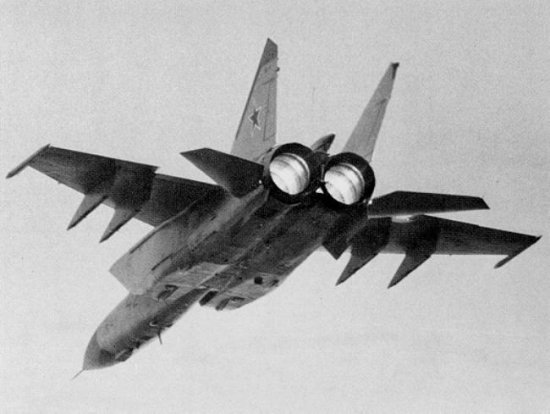
The ambitious project was one of the greatest challenges ever faced by the Soviet aerospace industry and required considerable research to address heating issues at such high speeds. One of the most significant hurdles overcome by the designers was the selection of structural materials capable of surviving the high temperatures near Mach 3. It was estimated that the earlier MiG-21 flying at Mach 2 would experience a peak temperature at its nose of about 225°F (107°C). The increase in air friction when flying an aircraft at Mach 3 generated a nose temperature nearly three times higher at 572°F (300°C). Aluminum, the conventional material most planes are made of, begins to fail and deform at a temperature of only 266°F (130°C) and would clearly not be suitable for the MiG-25.
Designers instead chose welded steel for most of the primary structure with special alloys of steel and titanium for the hottest areas like the nose and wing leading edges. All told, about 80% of the plane's structure was composed of tempered steel, 11% of aluminum, and 8% of titanium. The MiG-25 also required the development of advanced welding techniques to avoid cracking in the heat-resistant alloys. Over 75% of the airframe assembly required some form of welding while conventional riveting accounted for less than a quarter.
The MiG-25 designers also faced considerable aerodynamic challenges in designing the external configuration of the aircraft. The most significant problem was selecting a configuration that provided adequate maneuverability and stability while maintaining high speed and high altitude performance. The best trade-off between these conflicting requirements was found by adopting large but very thin wings mounted high on the fuselage and passing over two large ducts containing the powerful jet engines.
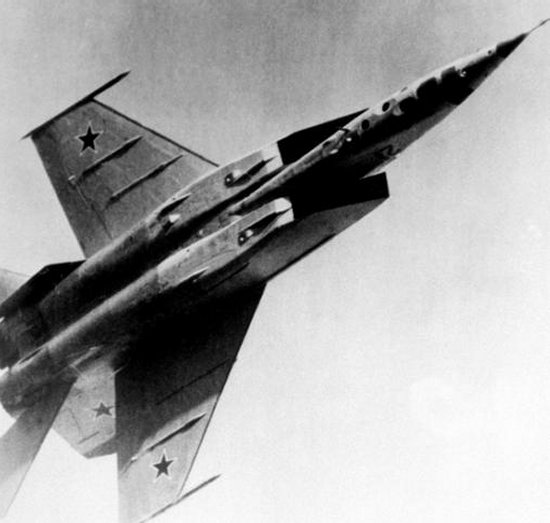
The large wing appears relatively simple at first glance but its shape contains subtle variations in leading edge sweep, dihedral, and airfoil thickness to improve performance. Several options for the wingtip were also explored including a triangular-shaped winglet and an external fuel tank with a large under slung fin. The design ultimately selected featured a large wingtip tubular mass to prevent wing flutter during flight. Much of the wing's interior is dedicated to carrying fuel, and about 70% of the volume of the MiG-25 is taken up by fuel tanks to maximize range and endurance.
Further sophisticated aerodynamic concepts were required for the air inlets. The MiG-25 makes use of variable geometry intakes with adjustable positions to improve engine performance at both low and high speeds. The inlets were placed sufficiently far apart to provide room for the narrow forward fuselage containing the cockpit and large search radar. Heating issues once again proved a dominant factor in designing the fuselage since complex cooling and insulation techniques were required for the avionics, engines, and cockpit. The canopy glass is said to be so hot at maximum speed that the pilot cannot touch it with his bare hand, yet the internal cooling systems maintain a comfortable temperature inside the cockpit.
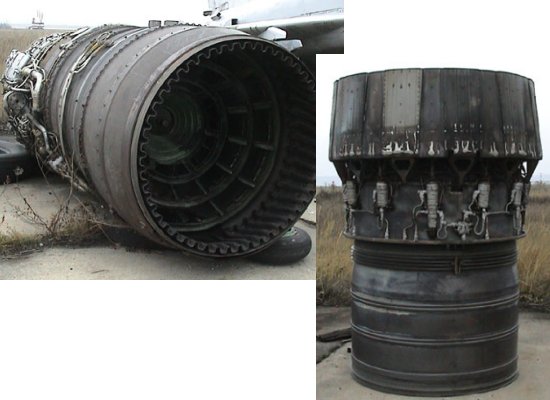
Other systems fitted aboard the MiG-25 included the powerful Smertch-A radar with a detection range of 54 nm (100 km) and tracking range of 27 nm (50 km). Power was provided by two very large and powerful R-15B-300 afterburning turbojets based on a design that had previously been tested aboard a high speed cruise missile. Typical armament was four R-40 air-to-air missiles, including two R-40R semi-active radar tracking and two R-40T infrared-homing variants, carried on underwing pylons.
The MiG-25 began flight testing in 1964 and a special stripped-down, high-performance prototype called the Ye-266 soon broke all existing speed, altitude, and time to climb records. Ten of the records set by the Ye-266 and improved Ye-266M still stand today, including:
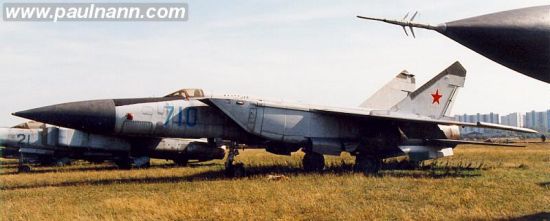
Given the MiG-25's poor maneuverability, the type was quite limited in the missions it could perform. The MiG-25 was generally only used as a high-speed interceptor or reconnaissance aircraft, though attempts at bomber and air defense suppression models were also made. An improved model designed to redress some of these limitations came in the form of the MiG-31 conceived during the 1970s. The goal of this new aircraft was to build a long-range interceptor capable of defending against low-altitude targets like cruise missiles. The new interceptor would also complement the more general-purpose Su-27 fighter then under development.
Configuration studies for the MiG-31 had included several sophisticated concepts that later contributed to the design of the MiG 1-42. However, these advanced ideas were ultimately rejected in favor of an improved MiG-25 that could be developed more rapidly. It was also planned to use this new aircraft as an opportunity to improve upon the speed and range limitations of the earlier MiG-25. Although still limited to a maximum of Mach 2.83, the MiG-31 incorporated aerodynamic and structural enhancements to reach higher speeds at low altitudes. More fuel-efficient engines and an in-flight refueling probe were also added to significantly increase range and endurance.
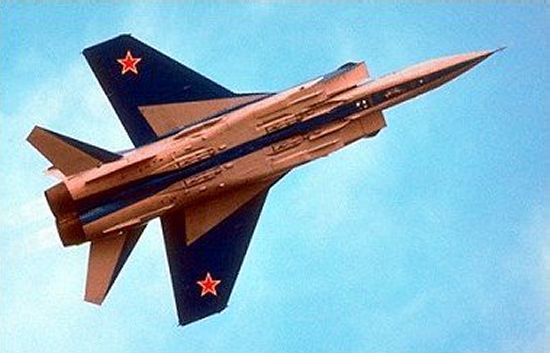
Other notable enhancements over the MiG-25 included far more capable avionics and weapons systems. Perhaps most significant of these improvements was a new radar that doubled the detection range to 108 nm (200 km), increased the tracking range by nearly 2.5 times to 65 nm (120 km), and allowed tracking of up to ten targets at once while engaging up to four simultaneously. The MiG-31 also featured an automatic guidance network allowing up to four aircraft to share information via a datalink and a sensitive infrared search and track (IRST) system. Furthermore, the MiG-31 introduced significantly improved air-to-air weapons like the R-60 infrared homing and R-33 semi-active radar tracking missiles.
The MiG-25 and MiG-31 family has proven quite successful for the interceptor and reconnaissance roles and saw considerable success on the export market. Production of the MiG-25 totaled 1,190 aircraft that have served with, among others, the Soviet Union, India, and several Middle Eastern countries like Iraq, Libya, and Syria. Small numbers remain in service throughout Asia. About 400 examples of the MiG-31 were delivered to the Soviet Union and many are still flown by Russia and perhaps Kazakhstan.
The MiG-25 and MiG-31 remain the world's fastest fighters to enter service, but a number of other designs came close to matching or even surpassing their capabilities. The US Air Force had planned to purchase a fighter model of the Lockheed A-12/SR-71 family called the F-12. Three YF-12 prototypes were built and one set a speed record of over Mach 3 in 1965, but the fighter model was cancelled. Another proposed Mach 3 interceptor was the North American F-108 Rapier intended to escort the B-70 Valkyrie bomber. The F-108 never got further than the mock-up stage, however, and was cancelled in 1959 along with production plans for the B-70 itself.
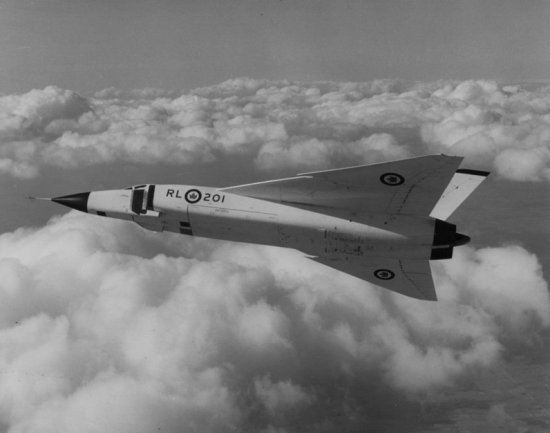
Another potential rival to the MiG-25 was the Avro Canada CF-105 Arrow developed during the 1950s. The CF-105 had been designed for a maximum speed of Mach 2.5, but the rapid advances being made in jet propulsion technology led many to believe that future models could be capable of Mach 3 or more. Unfortunately, the Arrow too was cancelled in 1959 after six prototypes had been completed. The maximum speed attained during flight testing had been Mach 1.96.
High speed is no longer considered essential in fighter design. Most high-performance fighters today, like the
F-15 Eagle,
Eurofighter Typhoon,
Su-30, Rafale,
Tornado, and
F-22 Raptor, have a top speed between Mach 2 and Mach 2.5. This maximum
speed is considered more than adequate for typical combat scenarios since the emphasis today is on maneuverability
rather than speed.
- answer by Joe Yoon, 31 July 2005
Related Topics:
What is the world's fastest single engine turbojet aircraft?
What are the maximum speeds of the F-22, F-16, B-2, SR-71, and F-18?
Read More Articles:


|
Aircraft | Design | Ask Us | Shop | Search |

|
|
| About Us | Contact Us | Copyright © 1997-2023 | |||
|
|
|||